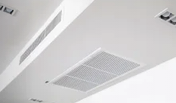Is Your School Safe?
5 STEPS TO MEASURING VENTILATION RATES IN YOUR CLASSROOMS
 With the threat of COVID-19 hanging over our children and teachers, indoor air quality in schools is more critical now than ever before. In response to these mounting concerns, experts at the Harvard T.H. Chan School of Public Health have put together an easy-to-follow guide for checking ventilation rates in classrooms. Here are the five steps they laid out:
With the threat of COVID-19 hanging over our children and teachers, indoor air quality in schools is more critical now than ever before. In response to these mounting concerns, experts at the Harvard T.H. Chan School of Public Health have put together an easy-to-follow guide for checking ventilation rates in classrooms. Here are the five steps they laid out:
1. Measure the classroom dimensions. To calculate the volume of the room in cubic feet, measure and then multiply its length, width, and height, making sure to account for oddities like tapered ceilings or rounded walls. You can turn to the architectural plans for help if necessary. During this step, also count and measure the room’s windows.
2. Perform preliminary audio and visual checks. To figure out whether the system is on and how the air is flowing, listen closely to see if you can hear the ventilator units and any supply or exhaust fans running. You can also test this visually by holding a tissue near the fan grille and watching how it moves to deduce whether air is being pushed away or sucked into the fan.
3. Measure or estimate the outdoor air ventilation rate. Based on whether the classroom is occupied and what type of ventilation system is in place, use a balometer or a carbon dioxide monitor to measure the incoming outdoor air flow (OA) and air change rate per hour (ACH) in the classroom.
4. Compare your results to the targets. Check whether your ACH meets the target of at least five air changes per hour, or, better yet, the “ideal” or six per hour.
5. If needed, consider supplemental air cleaning strategies. If your ACH is too low, you can consider additional air cleaning strategies. [Spot filters can be used to remove particles, chemicals, and some forms of bacteria from a classroom’s indoor air.] This will help to protect the students and teachers in individual classrooms or in your building.
Of course, COVID-19 isn’t the only thing that a district’s Director of Maintenance should be concerned about when it comes to indoor air quality. These steps can also protect students and teachers against a host of other airborne contaminants, like carbon monoxide, particulates, and chemical emissions from carpet, furniture, construction products, or classroom supplies.
To download the full step-by-step guide from the Harvard T.H. Chan School of Public Health, visit Schools.ForHealth.org/ Ventilation-Guide. It’s packed with formulas, examples, and resources that are very helpful.
